
Earth Day 2021: Sustainability, Resiliency, and Adaptation
How WGI is working to ensure a healthy and viable environment by embracing sustainability, resiliency, and adaptation (SRA).
Learn from award-winning professionals — explore our whitepapers, blogs, and the latest industry updates.
Join our dynamic organization of engineers, land surveyors, landscape architects, environmental scientists, and architects!
Talk to a market leader today! We’ll answer any questions you have about our professional services.
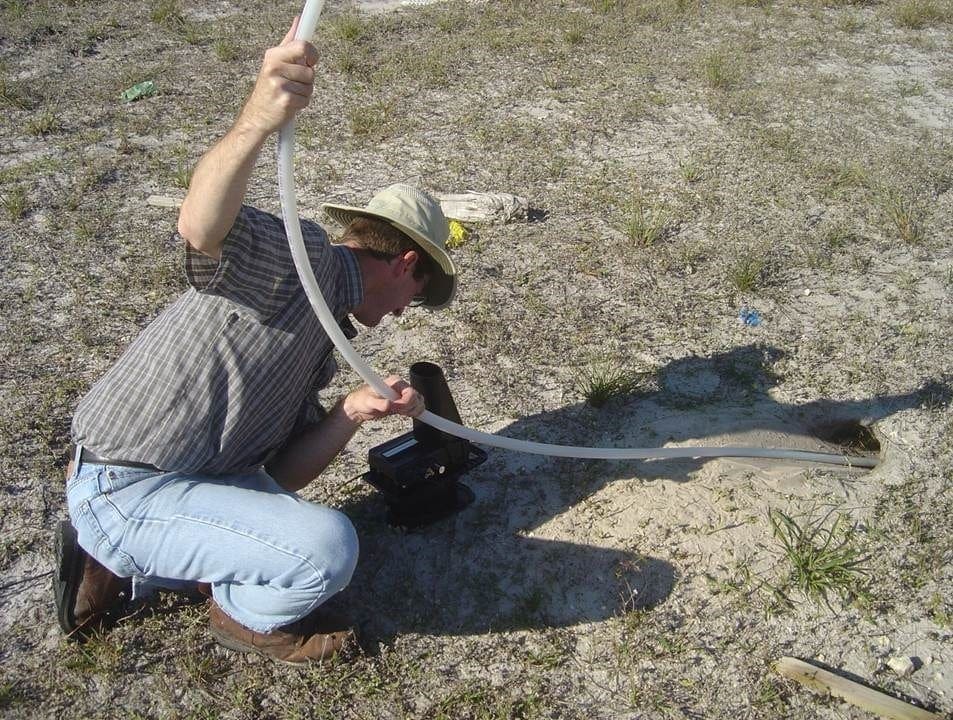
Admired by the public for their small size, long legs, and bright-yellow eyes, burrowing owls are one of the only owls that nest exclusively underground. The Florida burrowing owl (Athene cunicularia floridana) can be found throughout peninsular Florida. These owls are selective in their habitat and prefer well-drained sandy areas with limited understory vegetation for good visibility around the burrows to ensure protection from nearby predators. Burrowing owls are known to inhabit open prairies, golf courses, parks, pastures, airports, agriculture fields, vacant lots, and some urban areas.
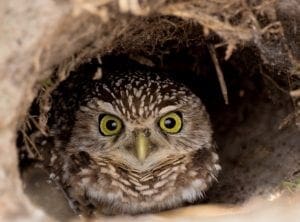
Burrowing owls are a protected species under Rule 68A-27, F.A.C. and the federal Migratory Bird Treaty Act. It is illegal to harass, harm, pursue, hunt, shoot, wound, kill, trap, capture, or collect a burrowing owl, or its eggs. This includes damaging the burrows or land development near burrows (even if the development won’t impact the actual burrows) because nearby habitat destruction can impair essential behavioral patterns, including breeding, feeding, or sheltering. There are serious penalties for harming burrowing owls, and violations sometimes end up on the news and result in very damaging media coverage.
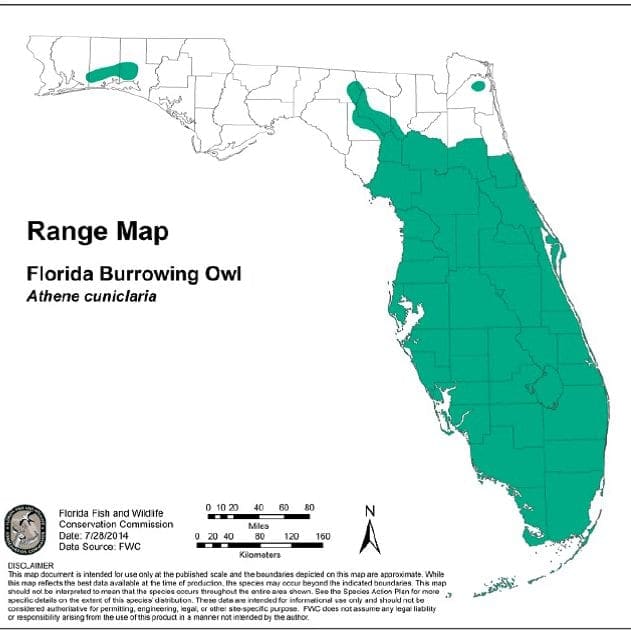
Counties: Alachua, Brevard, Broward, Citrus, Charlotte, Collier, DeSoto, Duval, Flagler, Gilchrist, Glades, Hardee, Hernando, Hendry, Highlands, Hillsborough, Indian River, Lake, Lee, Levy, Manatee, Marion, Martin, Miami-Dade, Monroe, Nassau, Okeechobee, Orange, Osceola, Palm Beach, Pasco, Pinellas, Polk, Putnam, Sarasota, Seminole, St. Lucie, Sumter, Volusia.
Protocols for surveying, permitting, and relocation have become more stringent in recent years. In 2010, the Florida Fish and Wildlife Conservation Commission (FWC) conducted a biological status review of the Florida burrowing owl population. In 2013, the FWC developed a species action plan to improve conservation management of the species, and in 2017 the Florida burrowing owl was officially reclassified from a species of special concern to a state designated threatened species. In 2018, FWC issued the Species Conservation Measures and Permitting Guidelines.
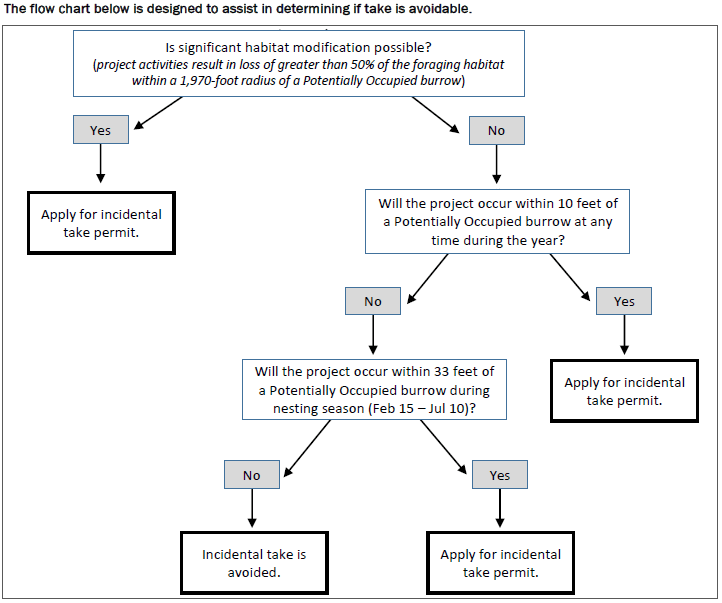
The new FWC Burrowing Owl Species Conservation Measures and Permitting Guidelines specify survey methodologies, minimum buffer zones around burrows, the different types of permits, mitigation options, and recommended conservation practices such as establishing preserve areas with starter burrows. A significant change to the guidelines is the new addition of minimum qualifications for the biologist conducting video scoping and relocating burrows. In the past, this work could be done by most biologists. Under the new guidelines, the biologist must meet experience thresholds for surveying, using a burrow video-scope, and excavating burrows.
If you think you may have burrowing owls on your land, it is important to have a qualified biologist on your team. WGI’s professional biologists meet the FWC qualifications to conduct video scoping and relocation of burrows. We can develop innovative solutions that allow your project to “take flight” while avoiding violations and protecting the owls in accordance with the new guidelines.
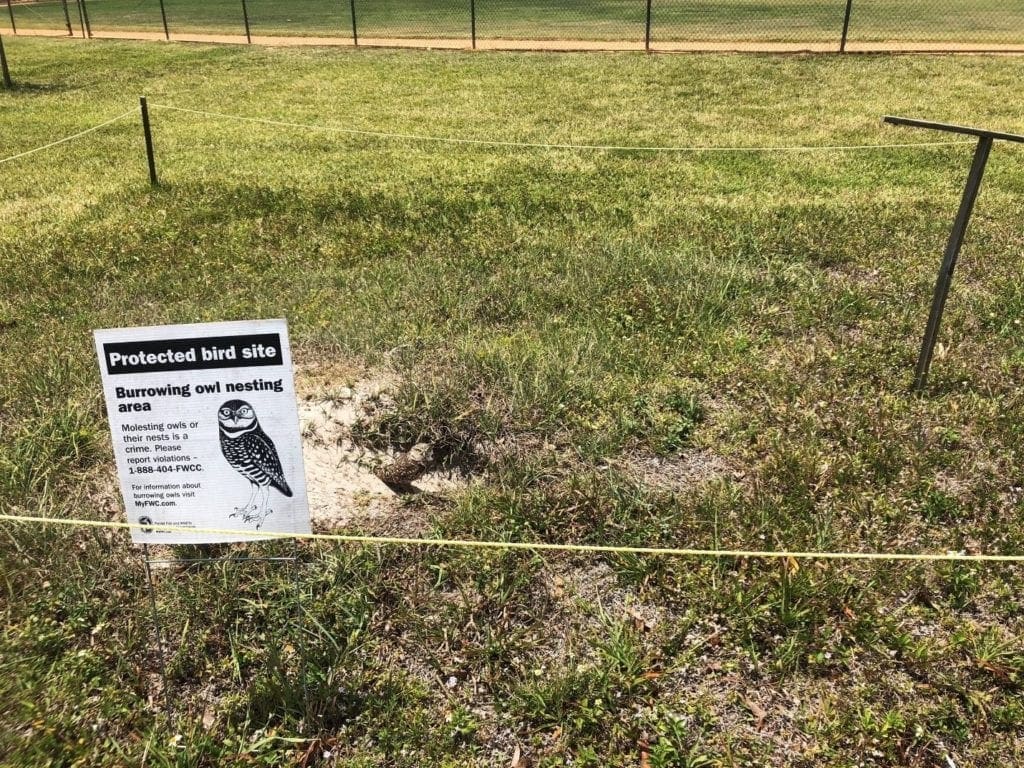
Learn more about our Environmental Services and contact us today to get more information on how we can help with your next project!
References:
Florida Fish & Wildlife Conservation Commission. 2018. Burrowing Owl Species Conservation Measures and Permitting Guidelines. Tallahassee, Florida.
Florida Fish & Wildlife Conservation Commission. 2011. Supplemental Information for the Florida Burrowing Owl, Biological Status Review Report. Tallahassee, Florida.
Florida Fish and Wildlife Conservation Commission. 2013. A species action plan for the Florida burrowing owl. Tallahassee, Florida.

Amanda Montgomery, PWS is an environmental scientist at WGI. She received her B.S. in biological sciences from Illinois State University and her M.S. in marine biology from Nova Southeastern University. As a former Environmental Specialist at the Florida Department of Environmental Protection and with experience serving the Florida Department of Transportation as an in-house permits consultant, Amanda is thoroughly familiar with state and federal environmental statutes and permitting in Florida. She is a Professional Wetland Scientist with expertise in freshwater and coastal systems, state lands authorizations, and environmental resource permitting. She is an active member of the South Florida Association of Environmental Professionals.

How WGI is working to ensure a healthy and viable environment by embracing sustainability, resiliency, and adaptation (SRA).
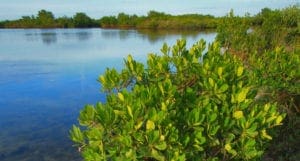
Qualified engineers and scientists who are experts in all things land and water are essential to meeting demanding development standards and protecting not only the environment, but your project.

For this milestone episode of WGI Unleashed, we get to know Amanda Montgomery, Environmental Scientist for our Environmental Team based in our Fort Lauderdale, FL office.

WGI moves up 37 spots on Engineering News-Record (ENR)’s 2020 Top 500 Design Firms List.

Melissa’s addition to the team solidifies WGI’s leadership in helping communities harness the benefits of much-needed infrastructure projects throughout the nation.

WGI was ranked in the top 200 for the tenth consecutive year by Engineering News-Record (ENR) on their Top 500 Design Firms List for 2024.
You’ve been searching for a place like WGI. We look forward to meeting you soon.
Sign up to receive emails to hear our latest news and achievements in our monthly newsletter.
Enter your zip code, and we’ll personalize your experience with local projects, office locations, team members, and more.
WGI supports its associates with meaningful opportunities for growth, strong benefits and perks, while we work collaboratively with clients and co-consultants to shape and improve communities.






WGI is a dynamic organization with opportunities nationwide for engineers, land surveyors, landscape architects, environmental scientists, and architects.